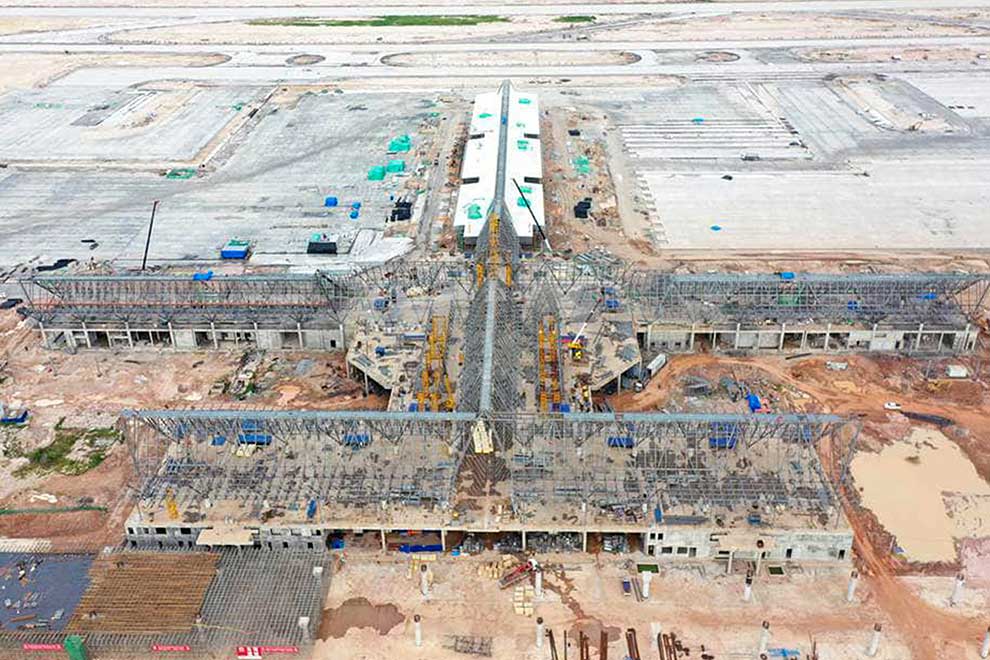
Under construction: Siem Reap-Angkor International Airport viewed from above on July 12. SUPPLIED
Siem Reap-Angkor International Airport developer Angkor International Airport Investment (Cambodia) Co Ltd (AIAI) has affirmed its commitment to push construction of the complex’s initial phase to 50-per-cent completion by September 30 and the 70-per-cent mark by December 31, according to the head of the national flag carrier airline.
“Some facilities, such as the electrical substation, the fuel storage station and air traffic control tower are more than 70 per cent finished,” Cambodia Angkor Air chairman Tekreth Samrach said in a statement on July 12 following a visit to the construction site of the new airport, adding that many stretches of the runway had been merged.
State Secretariat of Civil Aviation (SSCA) spokesman Sin Chansereyvutha told The Post that construction of the airport had reached 33.85 per cent completion as of June 30, commenting that work had been hampered by the Chinese government’s zero Covid-19 policy.
Although Chansereyvutha believes that construction would hit 50 per cent by September 30 as planned, he acknowledged concerns that progress may be slowed by China’s restrictive measures to contain the novel coronavirus.
These, he said, make travel to and from China difficult, hinder the supply of construction equipment, and drive up shipping costs, which in turn push up prices of certain materials.
The Siem Reap-Angkor International Airport will be built in three phases, on a 700.06ha plot in Sotr Nikum district’s Ta Yek commune east of Siem Reap town, with total capital investment of $880 million, $500 million of which is allotted for Phase I alone.
The airport will reportedly be able to receive about seven million passengers per year initially, 10 million by 2030, and 20 million by 2050. Similarly, annual cargo capacity is also expected to rise from 10,000 tonnes initially to 60,000 tonnes by 2050.
Cambodia Association of Travel Agents adviser Ho Vandy said Siem Reap’s new, larger airport would be “a prestige”, and a boon for “all sectors”, especially tourism.
He argued that airports in general add to the allure of the localities they serve, and that the new project would “further increase the tourism potential” of Siem Reap province.











